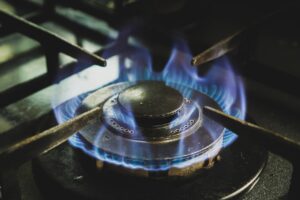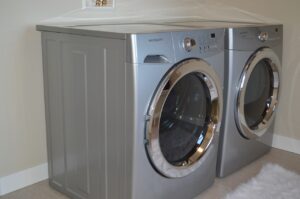Circuit breakers are an essential component in appliances that help ensure safety and prevent damage. They are designed to protect electrical circuits from overloads and short circuits, which can lead to electrical fires and damage to appliances. Understanding how circuit breakers work and their importance in appliance safety is crucial for every homeowner.
Key Takeaways
- Circuit breakers are safety devices that protect appliances from electrical overload.
- They work by interrupting the flow of electricity when it exceeds a safe level.
- Circuit breakers are essential for ensuring the safety of appliances and preventing electrical fires.
- There are different types of circuit breakers used in appliances, including thermal, magnetic, and hybrid.
- Choosing the right circuit breaker for your appliance is important for ensuring optimal safety and performance.
Understanding the Function of Circuit Breakers in Appliances
Circuit breakers work by interrupting the flow of electricity when there is an overload or short circuit in the electrical circuit. When the current exceeds a certain limit, the circuit breaker automatically trips, cutting off the power supply to the circuit. This prevents the wires from overheating and potentially causing a fire. The importance of circuit breakers in preventing electrical fires cannot be overstated. Without circuit breakers, an overload or short circuit could cause the wires to heat up and ignite nearby flammable materials, leading to a devastating fire. Circuit breakers act as a safety net, detecting abnormal currents and shutting off the power before any damage occurs.
Importance of Circuit Breakers in Ensuring Appliance Safety
In addition to protecting against electrical fires, circuit breakers also play a crucial role in ensuring appliance safety. When an appliance malfunctions or experiences a power surge, it can cause damage to the internal components. Circuit breakers act as a safeguard, cutting off the power supply to the appliance when it detects an abnormal current. Furthermore, circuit breakers protect against electrical shock. If there is a fault in an appliance’s wiring or if someone accidentally touches a live wire, the circuit breaker will trip and cut off the power supply, preventing any potential harm.
How Circuit Breakers Protect Appliances from Electrical Overload
Electrical overload occurs when too much current flows through an electrical circuit. This can happen when multiple appliances are connected to the same circuit or when an appliance draws more current than it is designed for. Circuit breakers are designed to detect this overload and trip, cutting off the power supply to the circuit. By tripping the circuit breaker, the appliance is protected from damage. Without a circuit breaker, the excessive current could cause the wires to overheat and potentially melt, leading to a short circuit or fire. Circuit breakers act as a safety mechanism, preventing any potential damage to the appliance.
Different Types of Circuit Breakers Used in Appliances
There are several different types of circuit breakers used in appliances, each with its own advantages and disadvantages. The most common types include thermal-magnetic circuit breakers, ground fault circuit interrupters (GFCIs), and arc fault circuit interrupters (AFCIs). Thermal-magnetic circuit breakers are the most commonly used type in appliances. They combine both thermal and magnetic trip mechanisms to provide protection against overloads and short circuits. They are reliable and relatively inexpensive. GFCIs are designed to protect against electrical shock. They monitor the flow of current in a circuit and trip if there is an imbalance, indicating that some current is flowing through an unintended path, such as through a person. GFCIs are commonly used in areas where water is present, such as bathrooms and kitchens. AFCIs are designed to protect against arc faults, which can occur when there is a loose or damaged wire in an electrical circuit. Arc faults can lead to electrical fires. AFCIs monitor the circuit for any abnormal arcing and trip if necessary.
Benefits of Using Circuit Breakers in Appliances
Using circuit breakers in appliances offers several benefits. Firstly, they provide protection against electrical fires by detecting overloads and short circuits and cutting off the power supply before any damage occurs. This helps ensure the safety of both the appliance and the surrounding area. Secondly, circuit breakers protect appliances from damage by tripping when there is an abnormal current flow. This prevents overheating of wires and potential damage to the internal components of the appliance. By protecting against electrical overload, circuit breakers help prolong the lifespan of appliances.
How to Choose the Right Circuit Breaker for Your Appliance
When choosing a circuit breaker for your appliance, there are several factors to consider. Firstly, you need to determine the appropriate current rating for the circuit breaker. This should match the maximum current that the appliance is designed to draw. Secondly, consider the type of circuit breaker that is most suitable for your appliance. Thermal-magnetic circuit breakers are suitable for most appliances, while GFCIs are necessary in areas where water is present. AFCIs are typically required in bedrooms and living areas to protect against arc faults. Lastly, consider the brand and quality of the circuit breaker. It is important to choose a reputable brand that has a track record of reliability and safety.
Maintenance and Repair of Circuit Breakers in Appliances
Regular maintenance and repair of circuit breakers are essential to ensure their proper functioning. It is important to inspect circuit breakers periodically for any signs of damage or wear. This includes checking for loose connections, corrosion, or any physical damage. If any issues are detected, it is important to have them repaired by a qualified electrician. Attempting to repair or replace a circuit breaker without proper knowledge and training can be dangerous and may result in further damage or electrical hazards.
Common Problems with Circuit Breakers in Appliances
There are several common problems that can occur with circuit breakers in appliances. One common issue is tripping due to overloads or short circuits. This can be caused by connecting too many appliances to a single circuit or by a faulty appliance. Another common problem is nuisance tripping, where the circuit breaker trips unnecessarily. This can be caused by a faulty circuit breaker or by electrical noise or interference. It is important to identify and fix these problems promptly to ensure the safety and proper functioning of the appliances.
Future Developments in Circuit Breaker Technology for Appliances
As technology continues to advance, so does circuit breaker technology. One area of development is the integration of smart features into circuit breakers. Smart circuit breakers can provide real-time monitoring and control of electrical circuits, allowing homeowners to remotely monitor their energy usage and detect any abnormalities. Another area of development is the use of solid-state circuit breakers. Unlike traditional circuit breakers that use mechanical components, solid-state circuit breakers use electronic components to interrupt the flow of current. This allows for faster response times and greater precision in detecting and tripping abnormal currents. Circuit breakers are an essential component in appliances that help ensure safety and prevent damage. They protect against electrical fires, prevent damage to appliances, and protect against electrical shock. Choosing the right circuit breaker for your appliance, regular maintenance, and prompt repair are crucial for ensuring their proper functioning. Staying up-to-date with advancements in circuit breaker technology is also important to take advantage of new features and improvements. By understanding the importance of circuit breakers and taking the necessary precautions, homeowners can ensure the safety of their appliances and their homes.
How Does the Circuit Breaker in Appliances Impact Emotional and Environmental Considerations?
The circuit breaker in appliances plays a crucial role in both emotional and environmental appliances considerations. By preventing electrical overloads and short circuits, it helps ensure the safety and longevity of the appliance, reducing the need for replacements and contributing to a more sustainable approach to consumer electronics.
FAQs
What is a circuit breaker?
A circuit breaker is an electrical switch that automatically interrupts the flow of current when it exceeds a certain level, preventing damage to the appliance or electrical system.
What is the role of a circuit breaker in appliances?
The role of a circuit breaker in appliances is to protect the appliance from damage due to electrical overload or short circuit. It does this by interrupting the flow of current when it exceeds a safe level.
How does a circuit breaker work?
A circuit breaker works by using a spring-loaded mechanism to open the circuit when the current exceeds a certain level. This interrupts the flow of electricity and prevents damage to the appliance or electrical system.
What are the different types of circuit breakers?
There are several types of circuit breakers, including thermal, magnetic, and hybrid. Thermal circuit breakers use a bimetallic strip to open the circuit when the temperature rises due to current overload. Magnetic circuit breakers use a solenoid to open the circuit when the current exceeds a certain level. Hybrid circuit breakers combine both thermal and magnetic mechanisms.
What is the importance of circuit breakers in appliances?
Circuit breakers are important in appliances because they protect the appliance from damage due to electrical overload or short circuit. This can prevent costly repairs or replacements and ensure the safe operation of the appliance.



